When an industry’s main defense strategy is hiring lawyers instead of explaining their practices, you know they’re hiding something.
The foie gras industry has a simple playbook: avoid talking about what they actually do. When cities like Chicago and NYC tried to ban foie gras, the industry hired lawyers to overturn the bans using legal loopholes instead of defending force-feeding to voters.
They know that once people learn what really happens to produce this “luxury” appetizer, it’s game over. So instead of being honest about their methods, they fight in courtrooms to keep serving $30 restaurant portions while hoping diners like us never find out the truth.
Here are 7 facts that foie gras farmers desperately want to keep hidden:
1. Female ducklings are killed or shipped thousands of miles away just for being female
Only male ducks are used for foie gras because female livers don’t grow as large as males, meaning that it’s less profitable to force-feed female ducks to make foie gras. So, what happens to all those “useless” female ducks?
The reality is depressing: In France alone, 40 million female ducklings each year are tossed into grinders while still alive. Some operations cram them into giant containers where they slowly die of hunger or suffocation. La Belle, a foie gras operation in New York ships them over 2,000 miles away to Trinidad in the Caribbean where they’re raised for meat.
Just like male chicks in the egg industry, day-old female ducklings face immediate death or displacement simply for being born the wrong gender. It’s industrial-scale gender discrimination that treats half of all newborns as disposable waste.

2. The industry exploits ducks that are mute, sterile, and flightless—and often lame from infected feet
The foie gras industry has deliberately shifted from geese to ducks (mostly Mulard ducks). As of 2020, ducks accounted for 90%+ of global foie gras production.
Mulard ducks are bred with multiple disabilities: they’re mute and cannot vocalize their pain during force-feeding, sterile and unable to reproduce, flightless with no chance of escape, and their esophagus has been bred to stretch more easily under repeated trauma. These traits are exploited by the foie gras industry.
In addition, many become lame from foot infections caused by standing on metal grilles designed to let their excessive waste flow into collection troughs below. Their feet become dry and cracked because they are not given access to water, a basic necessity for ducks’ health and wellbeing that is denied to them.
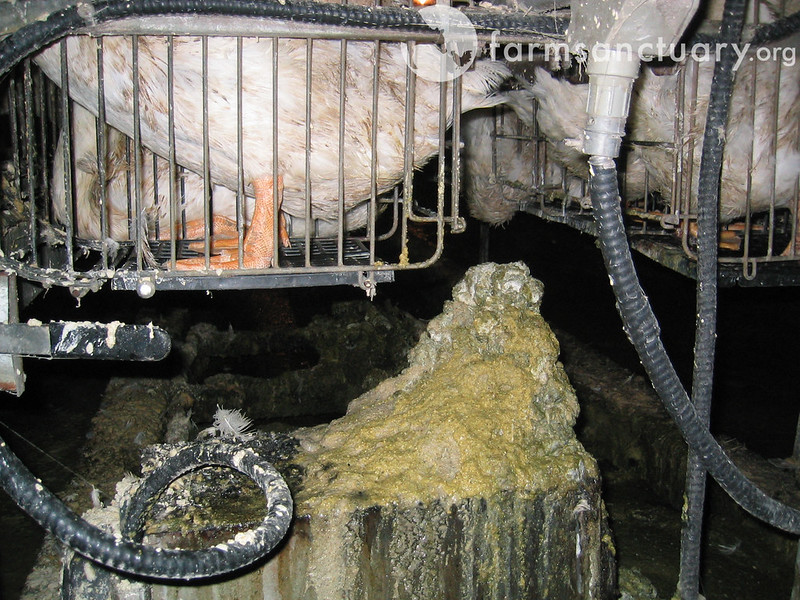
3. Force-feeders actually got bonuses for “accidentally killing” fewer than 50 ducks per month
During an undercover investigation at Hudson Valley Foie Gras in New York, a PETA investigator discovered that workers who killed fewer than 50 birds per month during the force-feeding process were given a bonus. These weren’t planned slaughters, these were ducks dying from ruptured organs and internal injuries caused by force-feeding itself.
2 to 6% of force-fed ducks pass away during the ‘gavage’ period (the specific phase in foie gras production where ducks or geese are force-fed, typically for 12-15 days), compared to just 0.2% of ducks of the same age on duck meat farms. That means the mortality rate for force-fed birds is 900-1900% higher than non-force-fed birds.
Hudson Valley’s own calculations show approximately 15,000 ducks die every year during gavage before their planned slaughter date. When thousands of animals die from your production process itself, that’s not farming. It’s systematic torture.
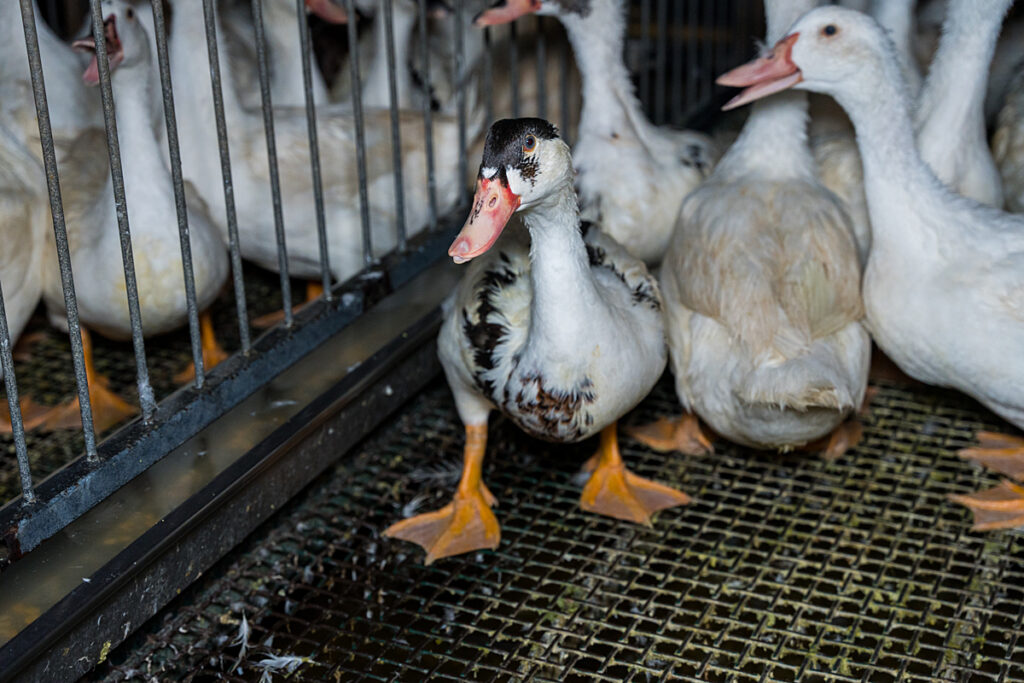
4. Foie gras contains toxic proteins that can trigger serious disease in humans who eat it
University of Tennessee researchers discovered that foie gras naturally contains amyloid proteins, the same toxic proteins found in Alzheimer’s disease. When researchers fed foie gras to mice, the animals developed lethal amyloid disease throughout their organs within two months.
The force-feeding process also creates ideal conditions for dangerous bacteria. Eating foie gras has been linked to bloody diarrhea, severe cramping, and vomiting from campylobacter, plus listeria infections that can trigger miscarriages and brain damage in pregnant women (source).
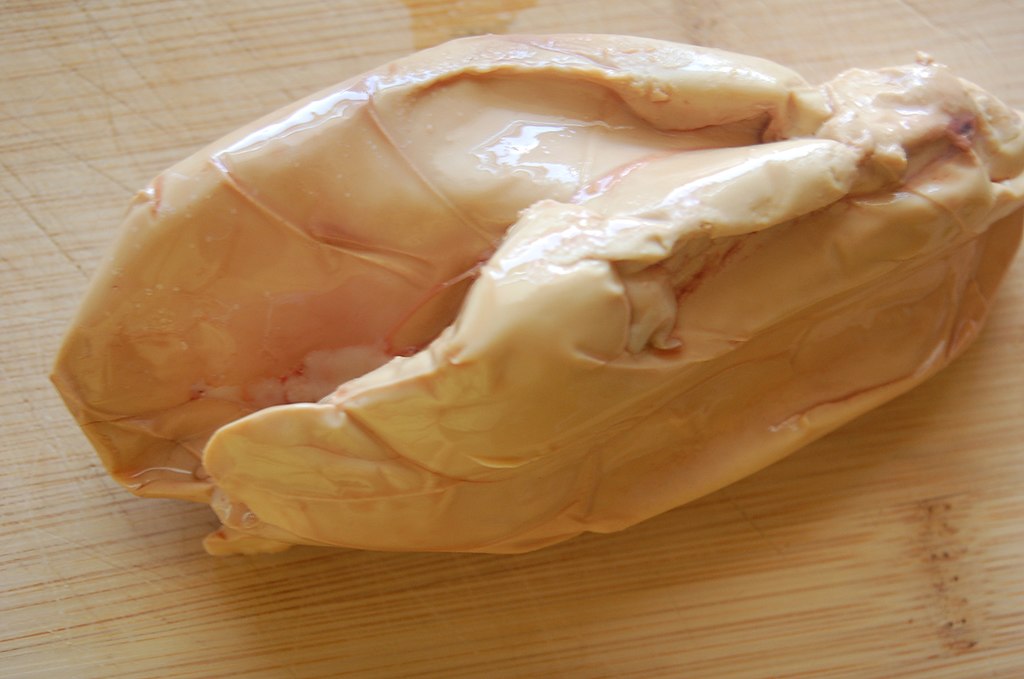
5. There are only a handful of foie gras ‘farms’ left in the United States
The two largest farms are both in Sullivan County, New York (Hudson Valley Foie Gras and La Belle Farm). There are a few other smaller farms that force-feed ducks and sell foie gras to restaurants and boutique grocers, including Au Bon Canard in Minnesota and Backwater Foie Gras in Louisiana.
Hudson Valley Foie Gras slaughters about 312,000 ducks annually, while La Belle kills about 130,000 annually. Together, they kill fewer than 450,000 ducks per year and employ approximately approximately 500 workers total. Despite marketing imagery showing green pastures and ducks walking outside, many foie gras farms keep their adult ducks trapped inside large industrial barns with bleak, artificial lighting.
Compare that to the 9+ billion chickens Americans consume annually, and you realize we’re talking about an industry that is hanging on by a thread.
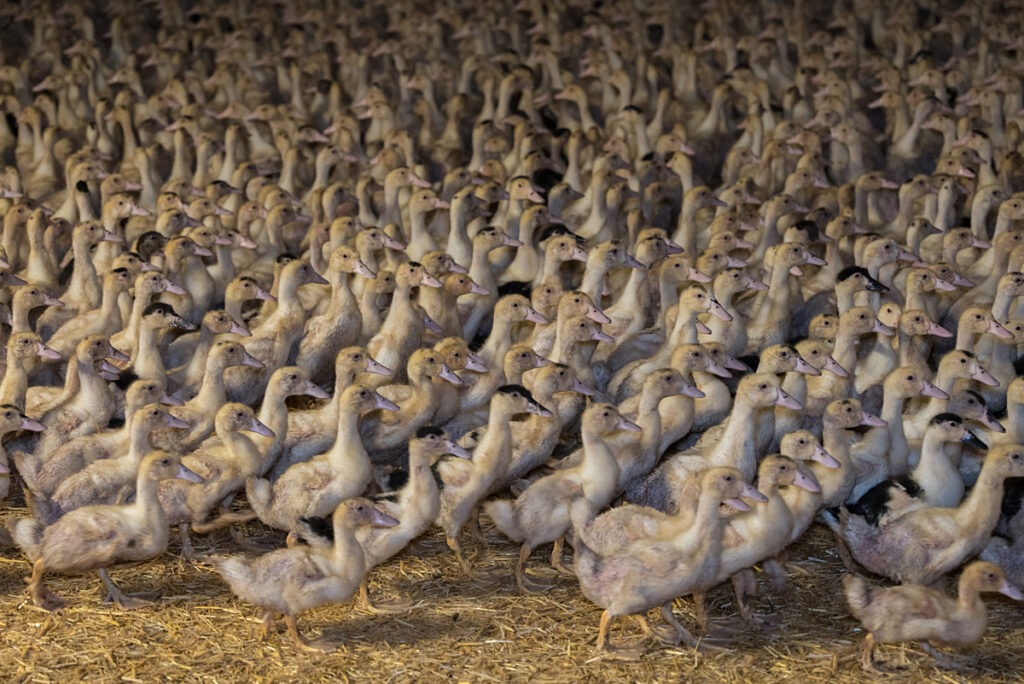
6. Inside foie gras ‘farms’, workers pump corn and oil down ducks’ throats three times per day
The force-feeding process called gavage involves workers ramming pipes down the throats of male ducks three times each day, pumping ~2 pounds of grain and fat into their stomachs every day. The feed, usually corn boiled with fat (to facilitate ingestion), deposits large amounts of fat in the liver.
To put that in perspective: that’s like force-feeding a 150-pound human about 24 pounds of food every single day. The process causes the birds’ livers to swell to up to 10 times their normal size, making it difficult for them to walk or even breathe.

7. The foie gras industry can’t win on the merits, so they hide behind legal technicalities
When New Yorkers learned about force-feeding, their response was decisive. A 2019 Mason-Dixon poll found that 81% of New York City voters support a complete ban on foie gras from force-fed birds.
But the foie gras industry wasn’t willing to accept defeat. Although City Council in New York City passed the ban in 2019, the foie gras industry challenged it in court and got it overturned on a technicality in 2024. Chicago banned foie gras in 2006, but the industry overturned it two years later. California banned it in 2012 and still faces constant legal challenges.
The industry knows they can’t defend force-feeding to the public, so they avoid that fight entirely. Instead, they hire lawyers to find legal loopholes and procedural arguments.
That tells you everything about how weak their position really is, and why it’s so important to continue this fight. The good news is, there are a lot of states without legal loopholes (other preemptions that the industry can use to defeat legislation), including Colorado.
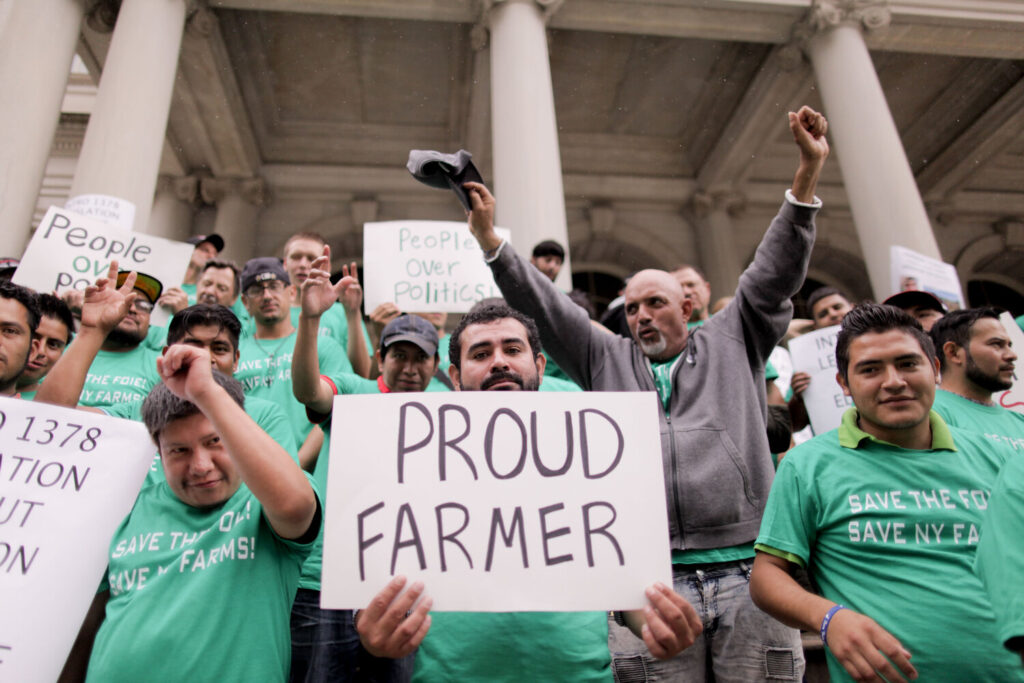
The foie gras industry is fighting to defend a practice that is outdated and so clearly inhumane. That’s not a sustainable business model. That’s an industry waiting to collapse the moment voters get a chance to act on their values.
That moment is now.
This year, Pro-Animal Future is launching coordinated campaigns in Denver, Washington DC, and Portland (Oregon) to cut off key market access for this tiny industry. Each ordinance will force restaurants nationwide to reconsider whether serving foie gras is worth the controversy. Each victory will set a precedent and provide momentum for the next campaign.
When major cities start banning foie gras, activists across the nation pay attention. Restaurants preemptively remove items rather than face public backlash. Supply chains get disrupted. The industry that survived by hiding the truth suddenly faces campaigns designed to expose it.
The foie gras industry has survived this long because most people never learn these facts.
Our campaigns will put the truth about what happens to ducks on foie gras factory farms in front of millions of voters across Washington DC, Denver, and Portland.
[Give now to support our campaigns to end foie gras with a matched gift→]
Pro-Animal Future is a grassroots political movement working to evolve beyond factory farming through local political action. [Learn more about us →]

